These posts are not for foraging. They are intended for entertainment and intellectual satisfaction only. These posts are not a field guide nor comprehensive in any way - their accuracy is not assured in any way. Do not eat wild mushrooms unless you are a professional, have substantial professional assistance or have a wealth of personal experience with a specific species. Do not make any foraging decisions based on these posts. To do so could be dangerous or life threatening.
These Posts Contains No Information Regarding Edibility Or Toxicity
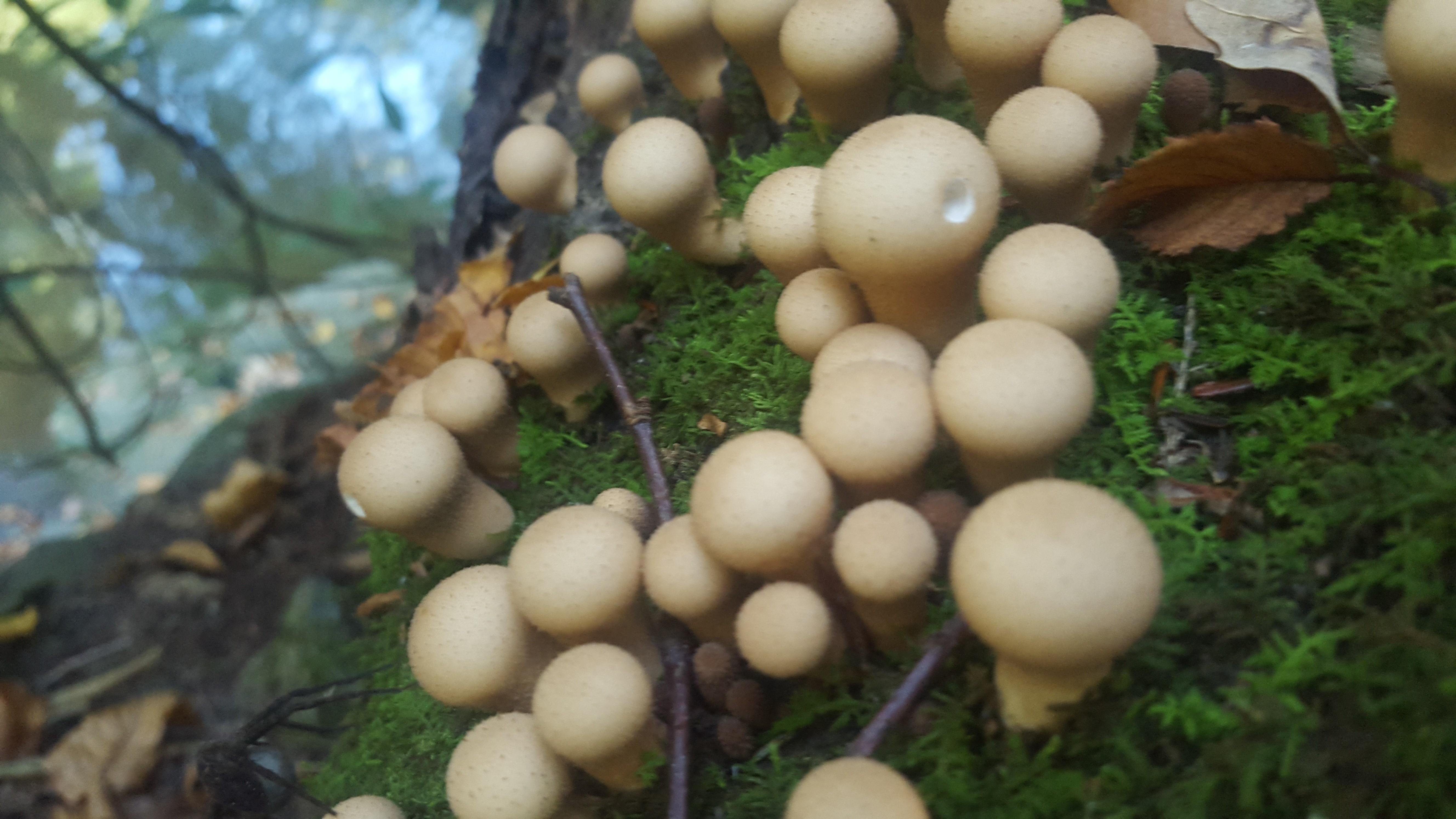
They lived by a stream, on a log, in a bed of moss
I nearly passed them by completely, as did the rest of my party. But my eyes were peeled for mushrooms, and I gave special attention to hidden places, easy to overlook. As we sped over a walkway past a rolling stream, I turned back to double check nothing had been missed.
What I found was the most perfect colony lf L.pyriforme puffballs I've ever seen
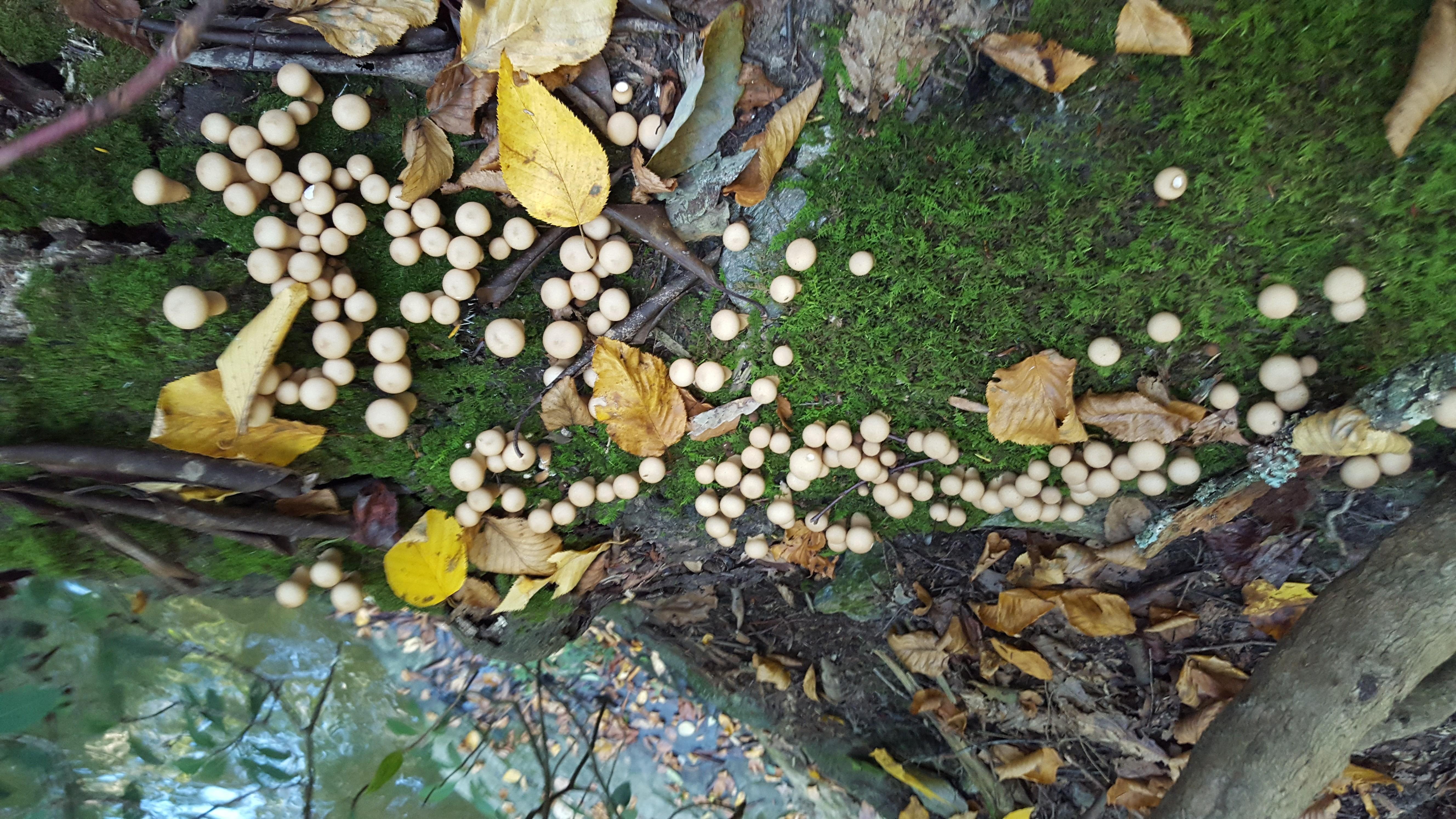
Nearly a hundred of the little buggers!
L.pyriforme is one of the many varieties of common puffballs in the fungal world. I've previously written about a cousin of this species, L.perlatum. L.perlatum tends to grow a bit bigger, with whiter skin that is covered in hundreds of the most perfect little spikes.
You can find puffballs all around the world, growing on dirt or decomposing wood, but always saprobic.L.pyriforme always grows on wood. I've found them in the past, or their recent hollow remains, basically all year round outside of late fall and winter.
If you chop them in half, they have a nice mushroomy odor - but as we'll discuss, they can release a ton of spores - so don't go smelling them if they've already begun to mature or you could get a nose full.
L.pyriforme looks slightly less impressive upclose than its showier cousin
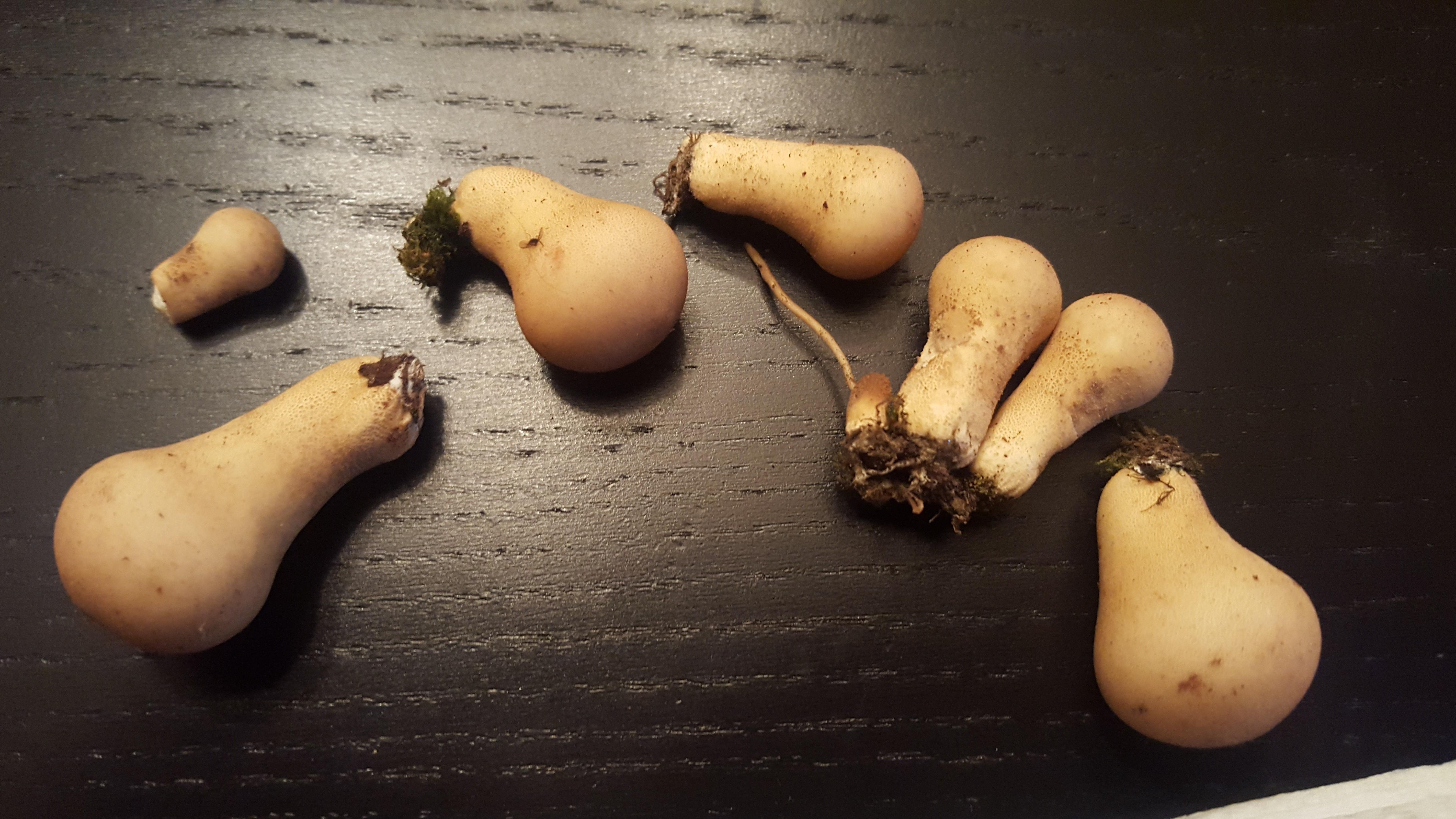
L.pyriformes skin is a light amber brown, thin, and mostly smooth.
These specimens did not get higher than 2 to 3cm or broader than 2cm in width. But, what they lack in size and show stopping looks they gain in sheer numbers. Plus, I think they look quite fetching myself.
"Puffball" is a loose category for a wide range of mushrooms. The puffballs are part of a larger grouping of mushrooms referred to as the Gasteroid mushrooms and previously referred to as the Gasteromycetes - or "stomach mushrooms."
These mushrooms here are quite small, but other puffballs can get much larger. L.perlatum are bigger versions, while Calvatia gigantea live at the top of the food chain and can grow to the size of small sheep.
All three of these examples are Gasteroids, and more specifically puffballs. And all three share, essentially, the same methodology for procreation - the wholesale transformation of the mushroom's flesh into reproductive spores.
To help explain, let's cut one of the poor sops in half
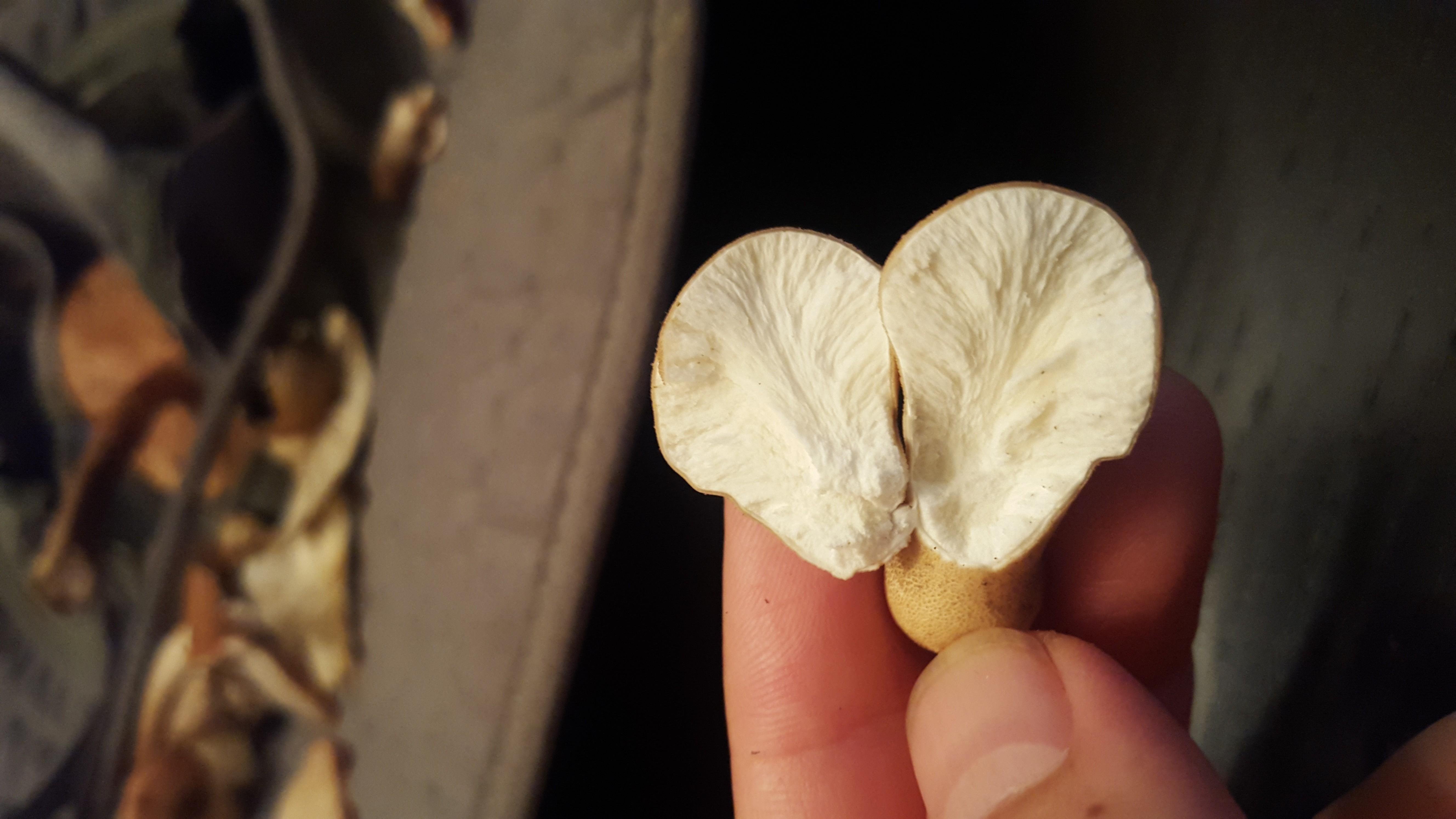
The perfect white flesh of this mushroom is called "gleba"
Gleba is found in puffballs and earthballs - and it is mushroom flesh which eventually matures into the spores themselves.
Right now, as you can see in the photo, these L.pyriformes are fairly young. They have not begun to mature at all, which is why the flesh is perfectly white, through and through.
But, if I were to go back tommorow, or the next day, these mushrooms would be a little larger. If I cut them half at a later stage of maturation the inside would be partially brown.
Eventually the mushrooms reach full maturation, at which point the gleba - meaning the whole flesh of the mushroom - turns a deep brown and becomes powdery. A hole naturally forms at the center of the top of the puffball and from that whole the gleba - now comprised entirely of billions of brown spores, spills out with every gust of wind.
The whole process is fairly grotesque actually. But boy is it effective. There's a great video that demonstrates the distasteful end result on youtube.
But in my experience dead colonies of dessicated puffball corpses are a dime a dozen. But it's a hell of a lot more satisfying to stumble upon these guys when they're still alive and well.
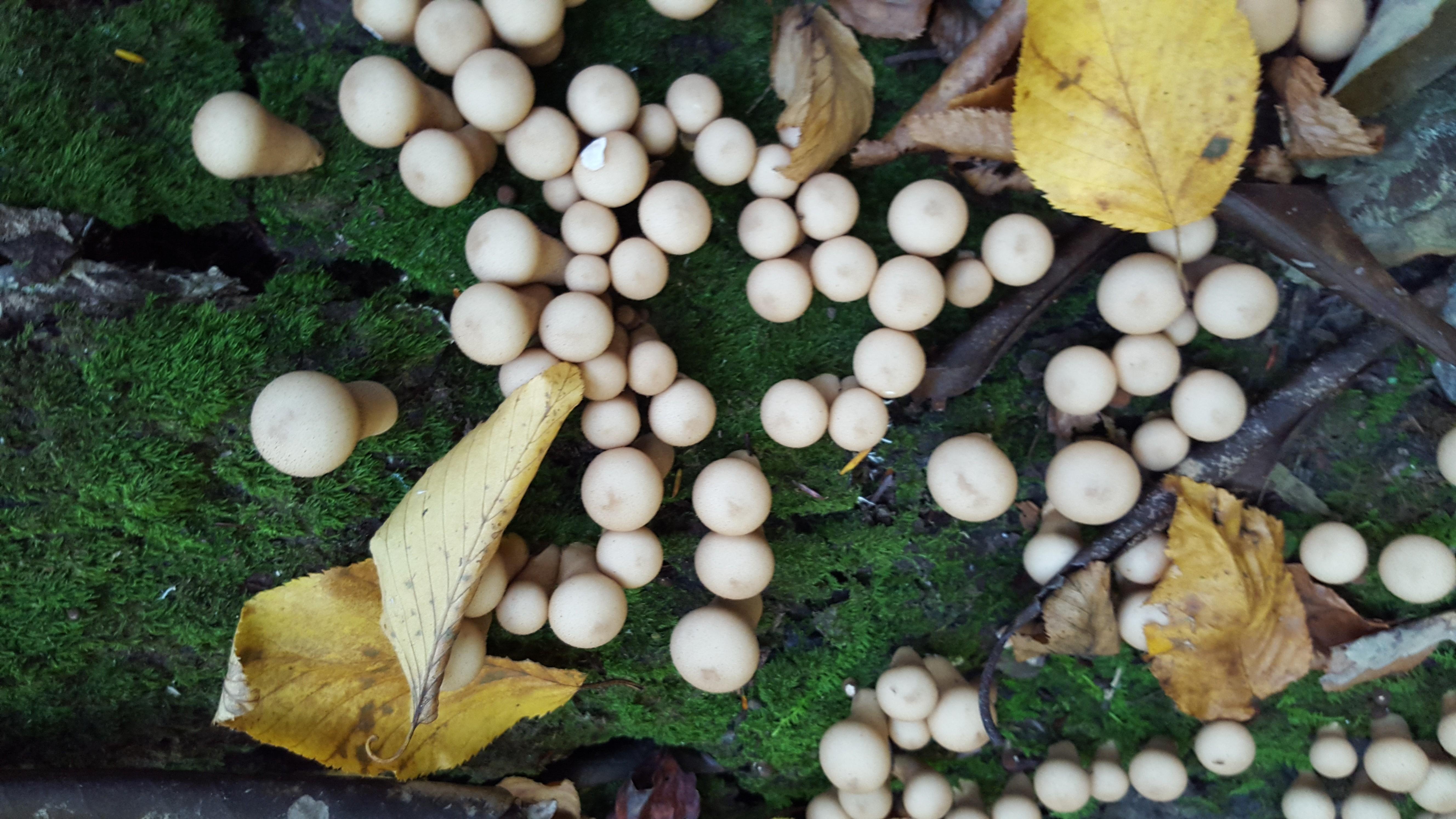
Photos are all my own
Information Sources:
[1]Kuo On the L.pyriforme
[2]Tom Volk on L.pyriforme
[3]First-Nature on L.pyriforme
[4]Wikipedia on L.pyriforme
